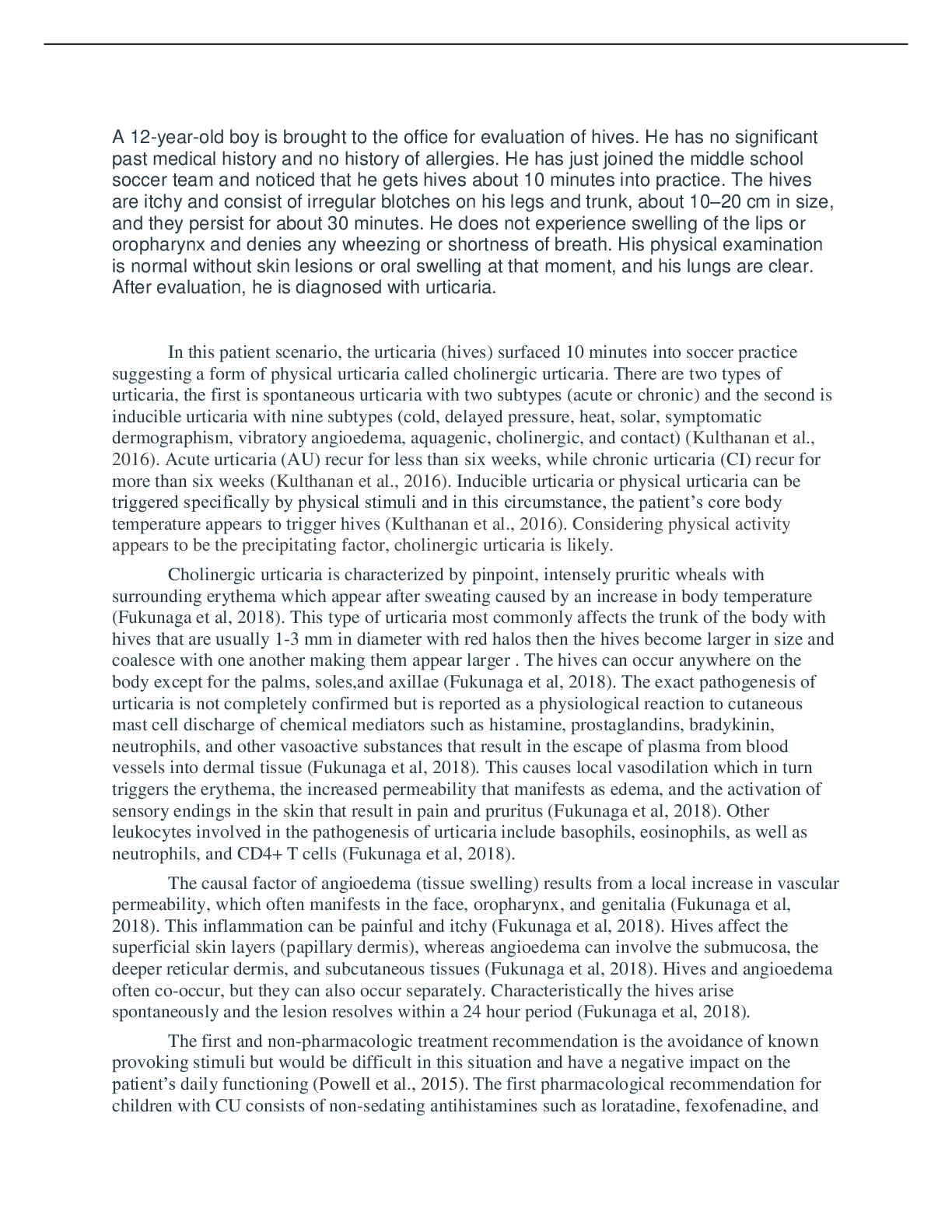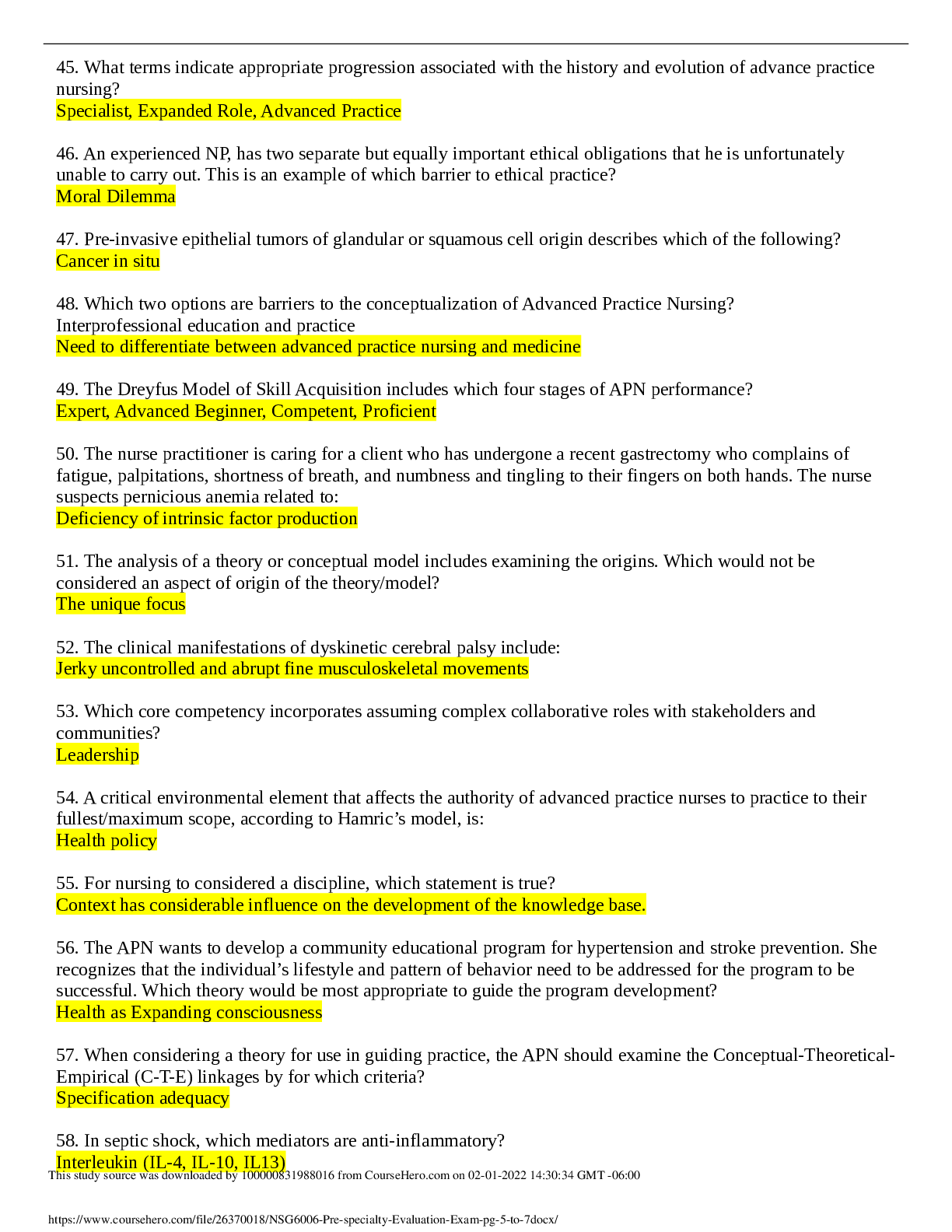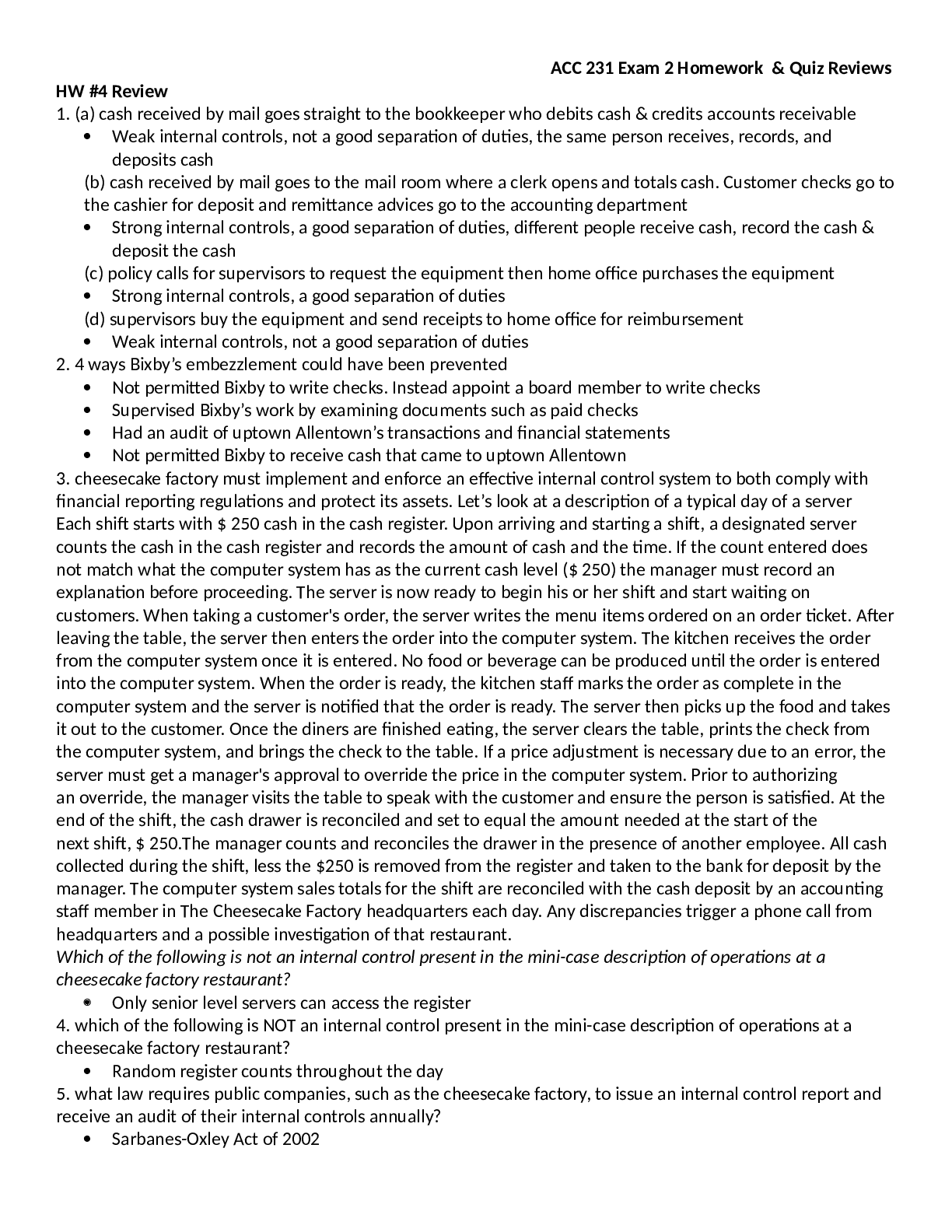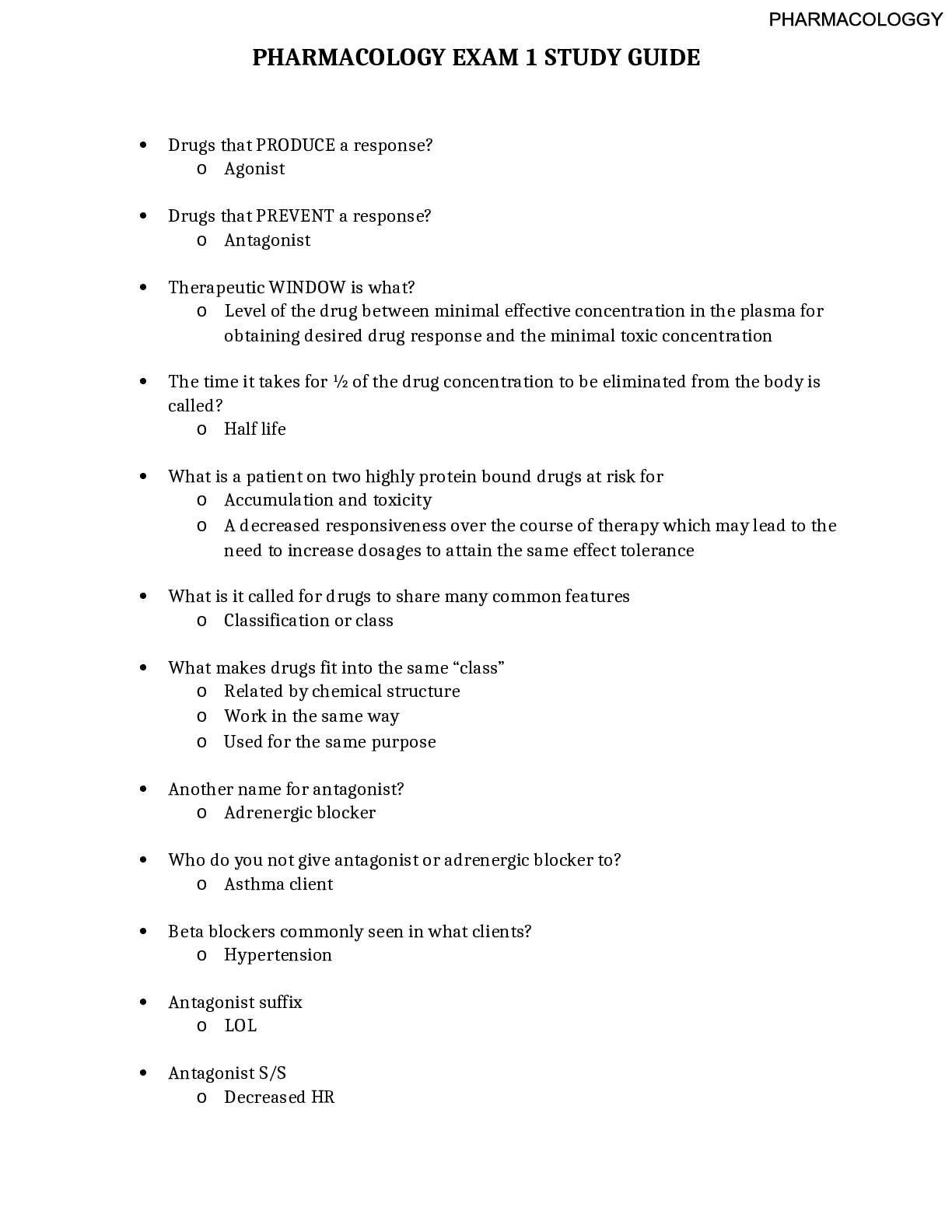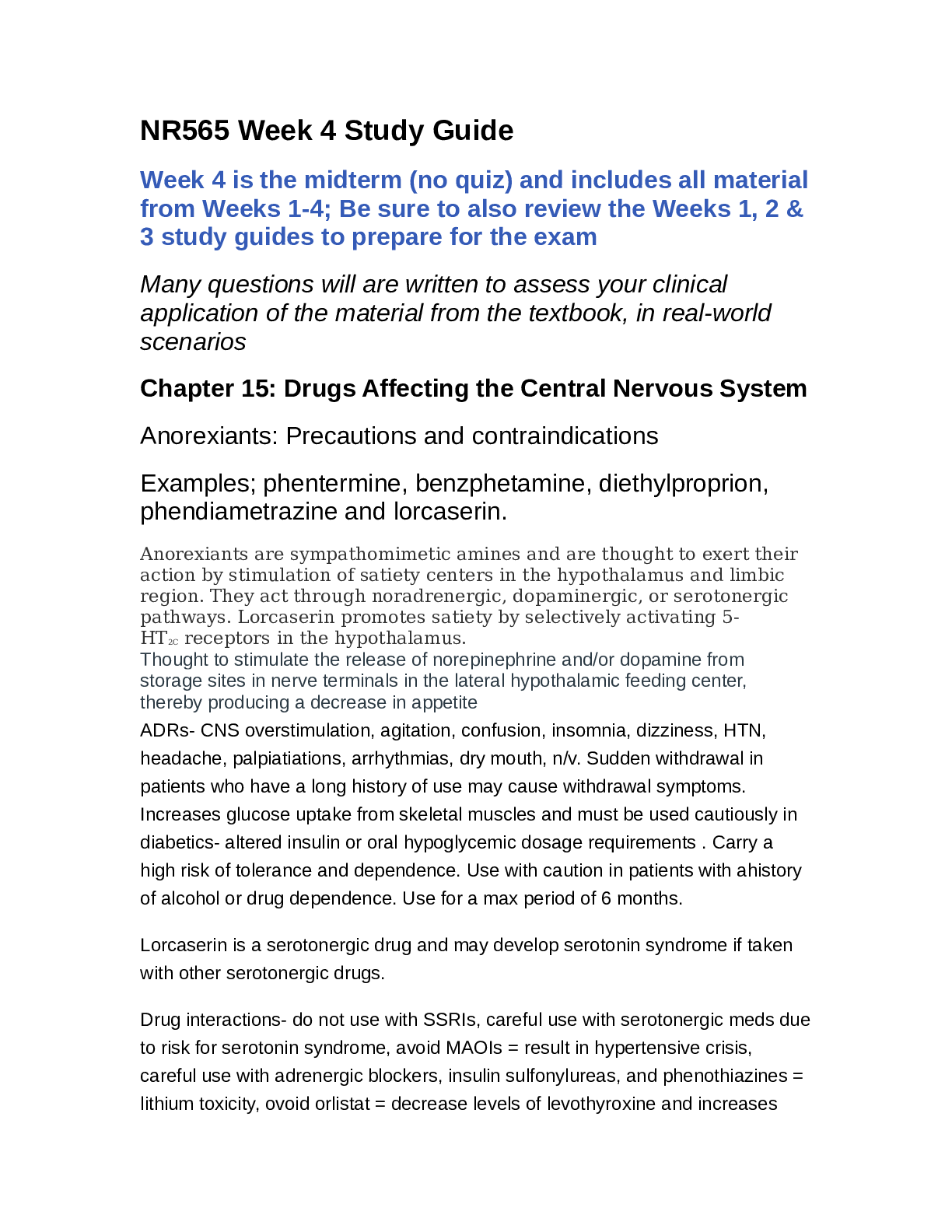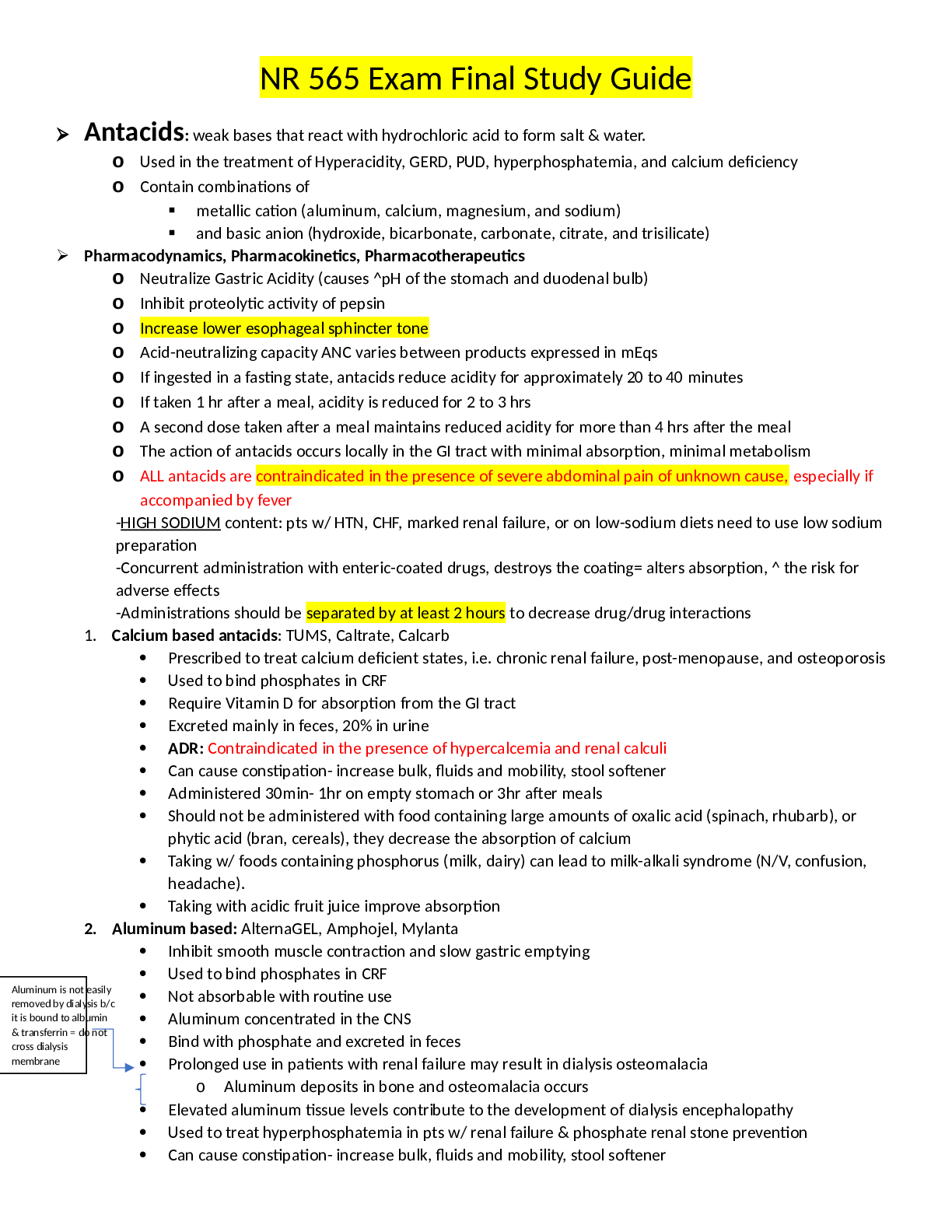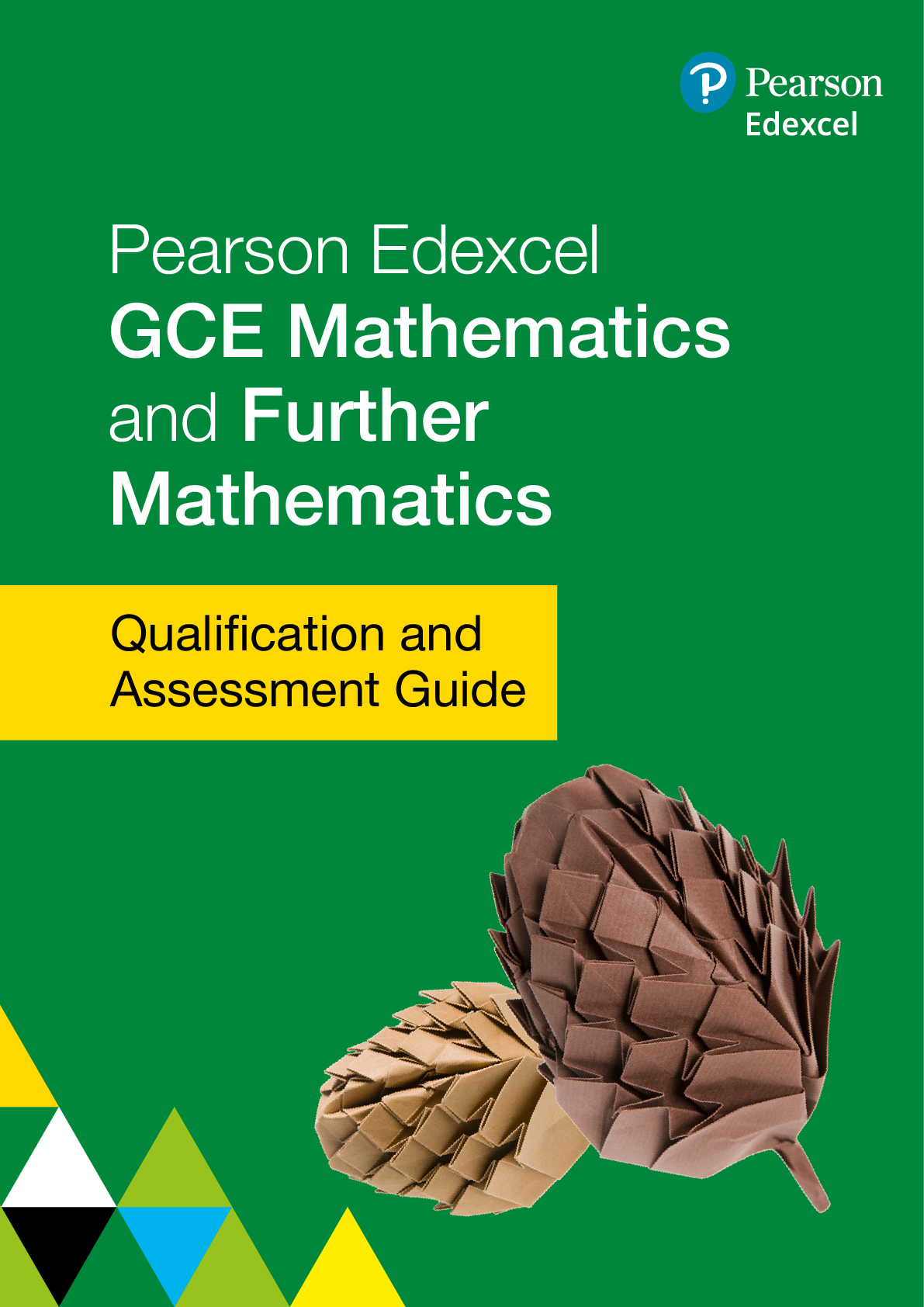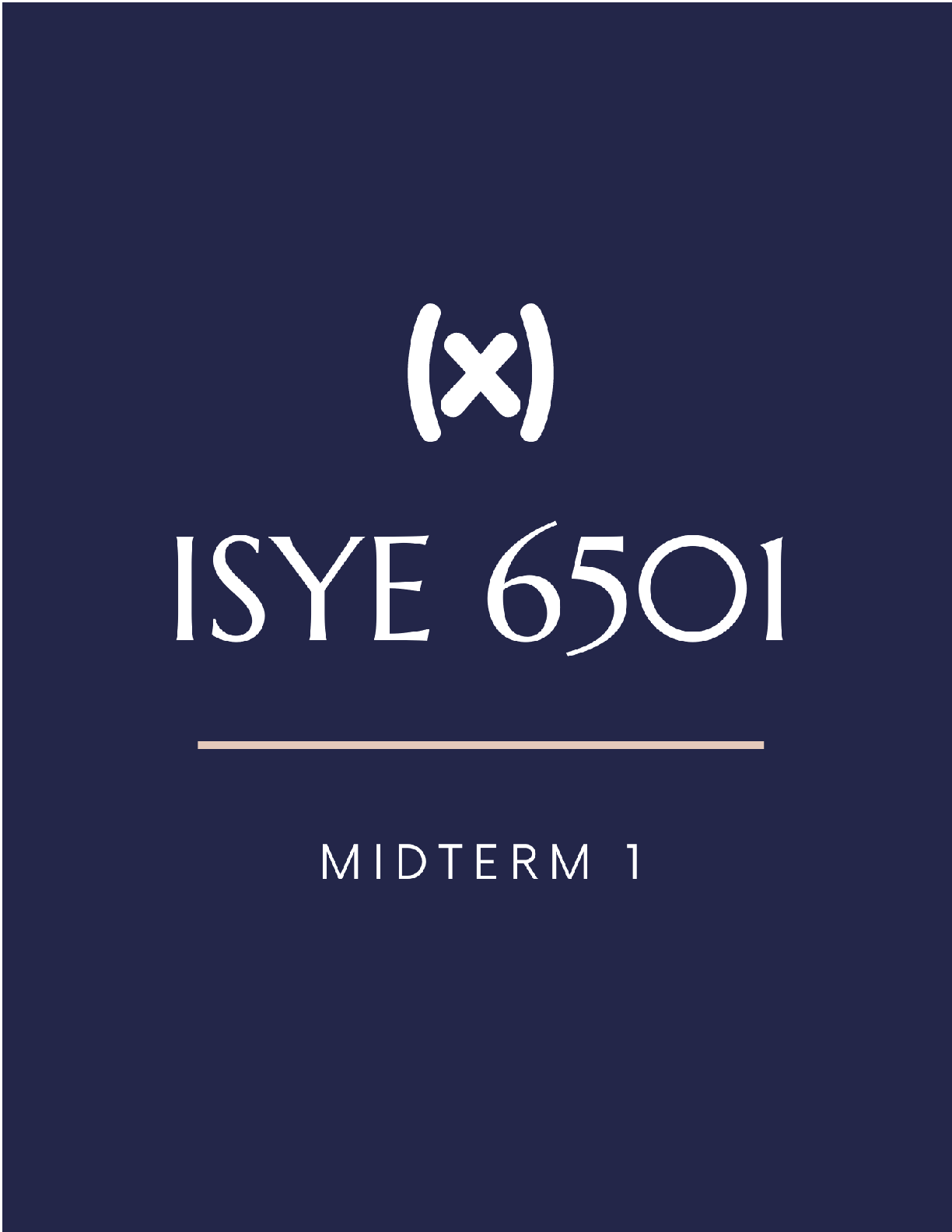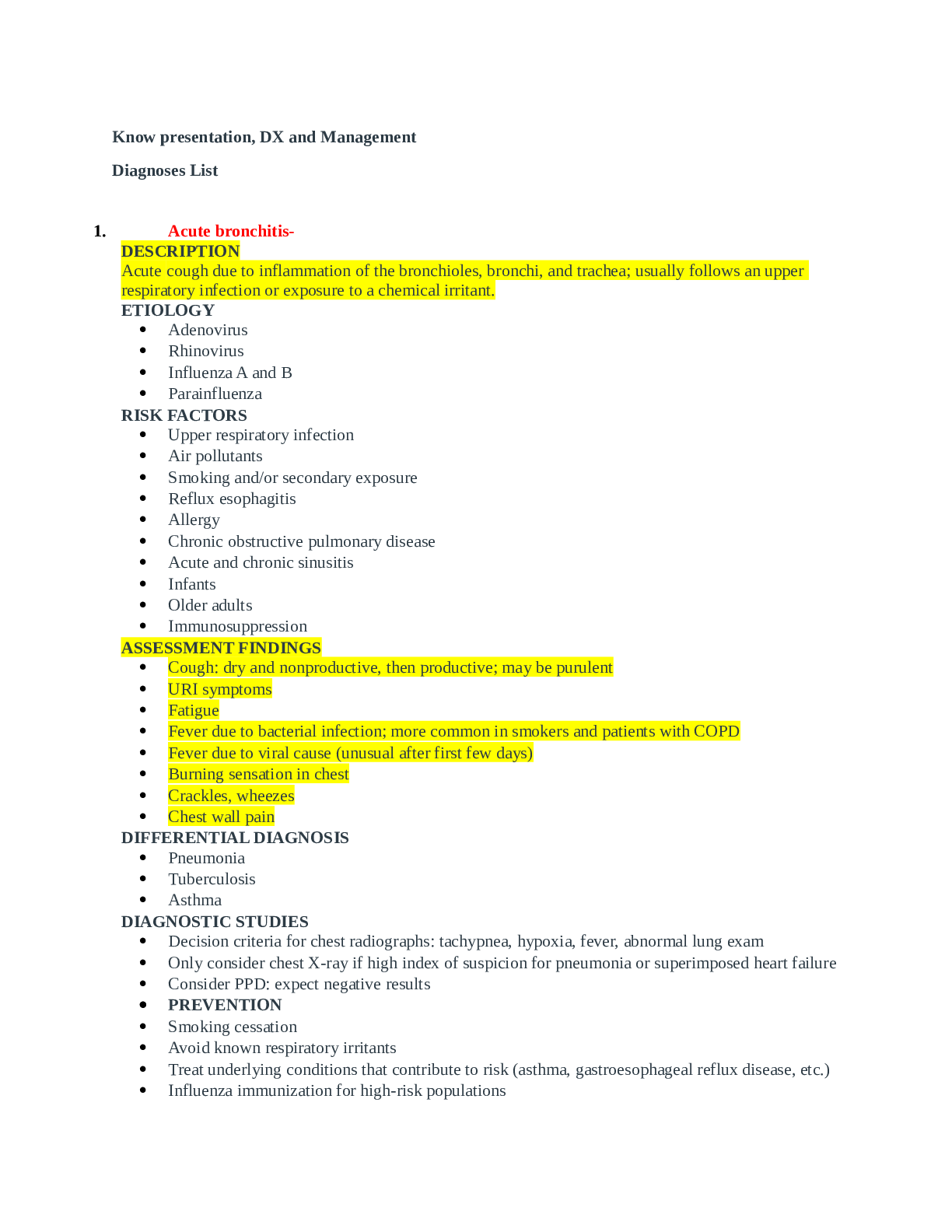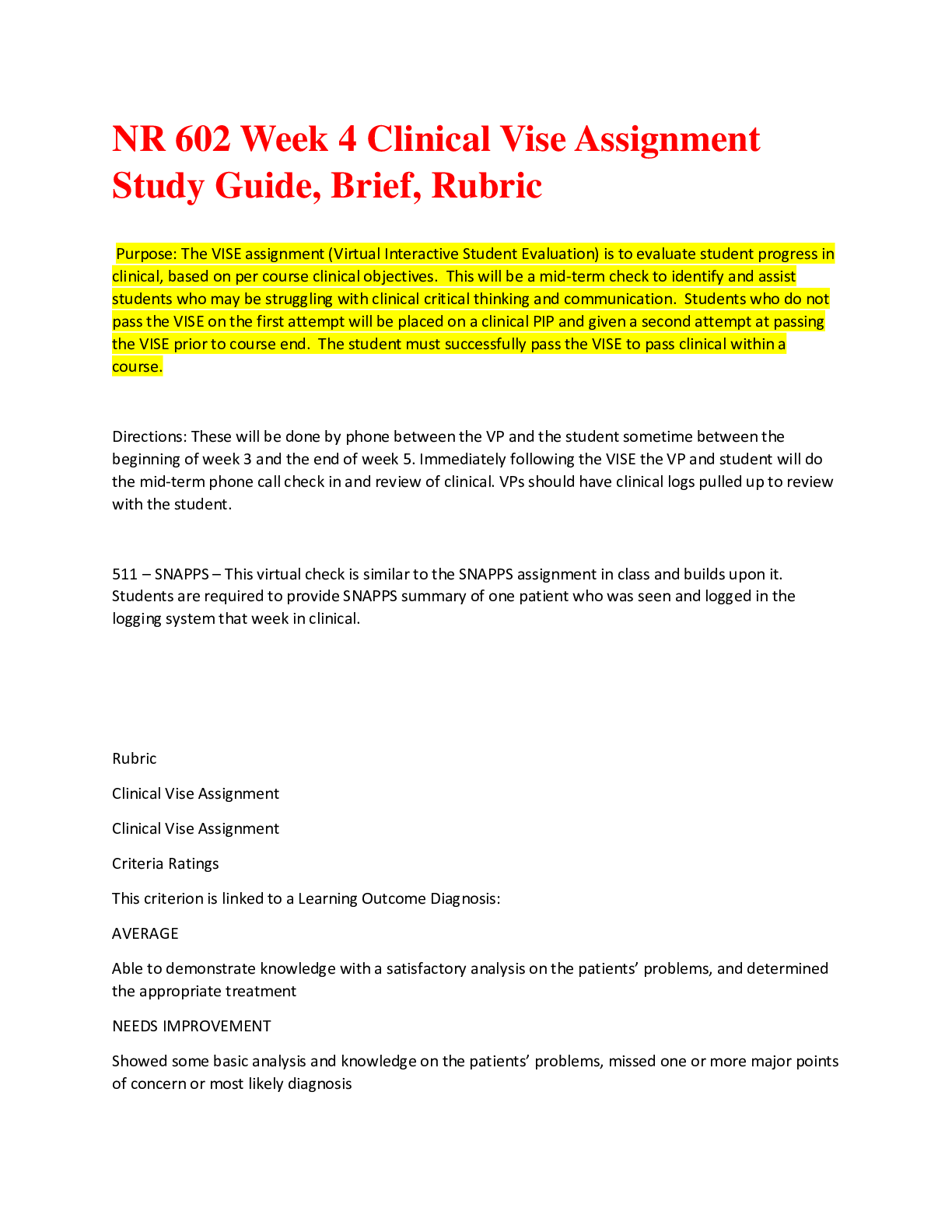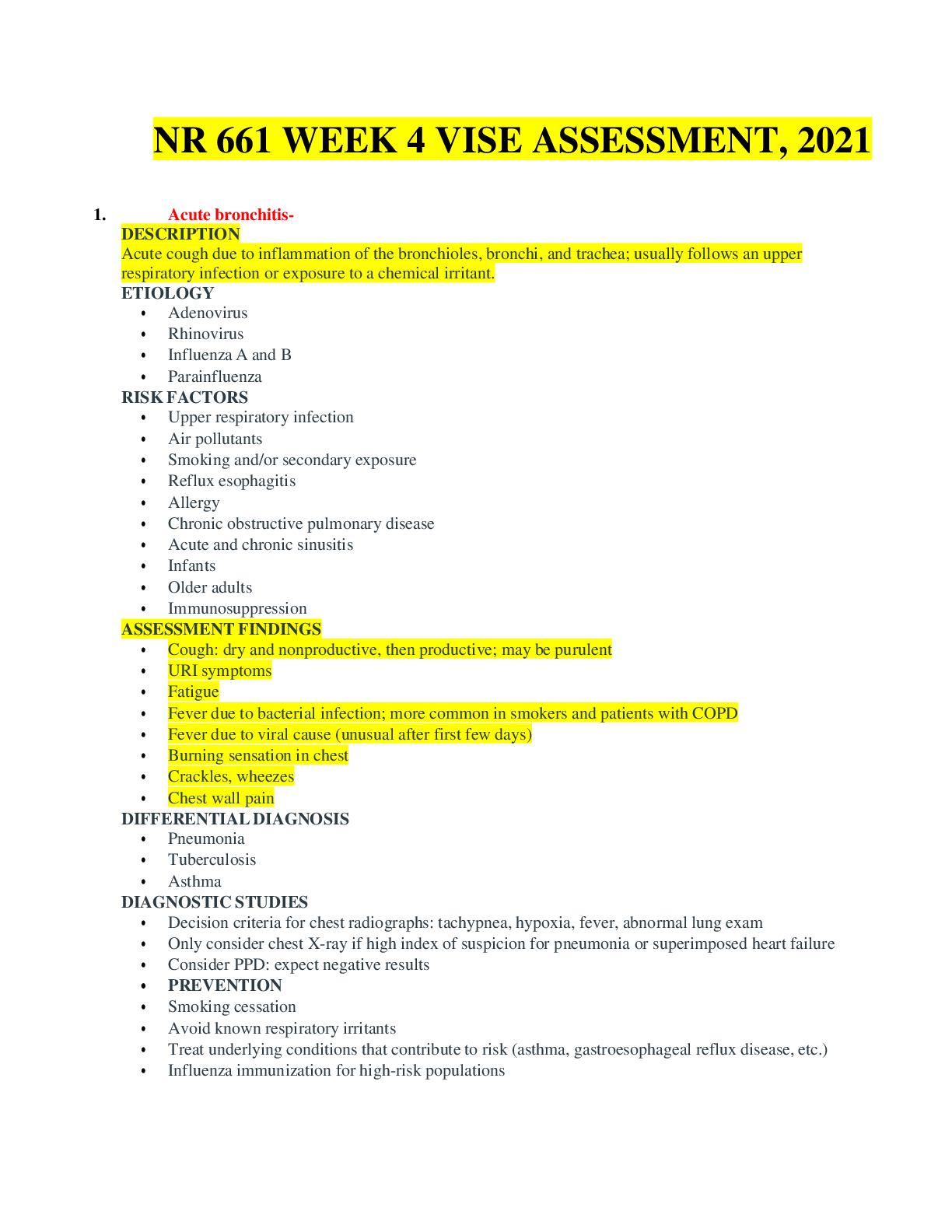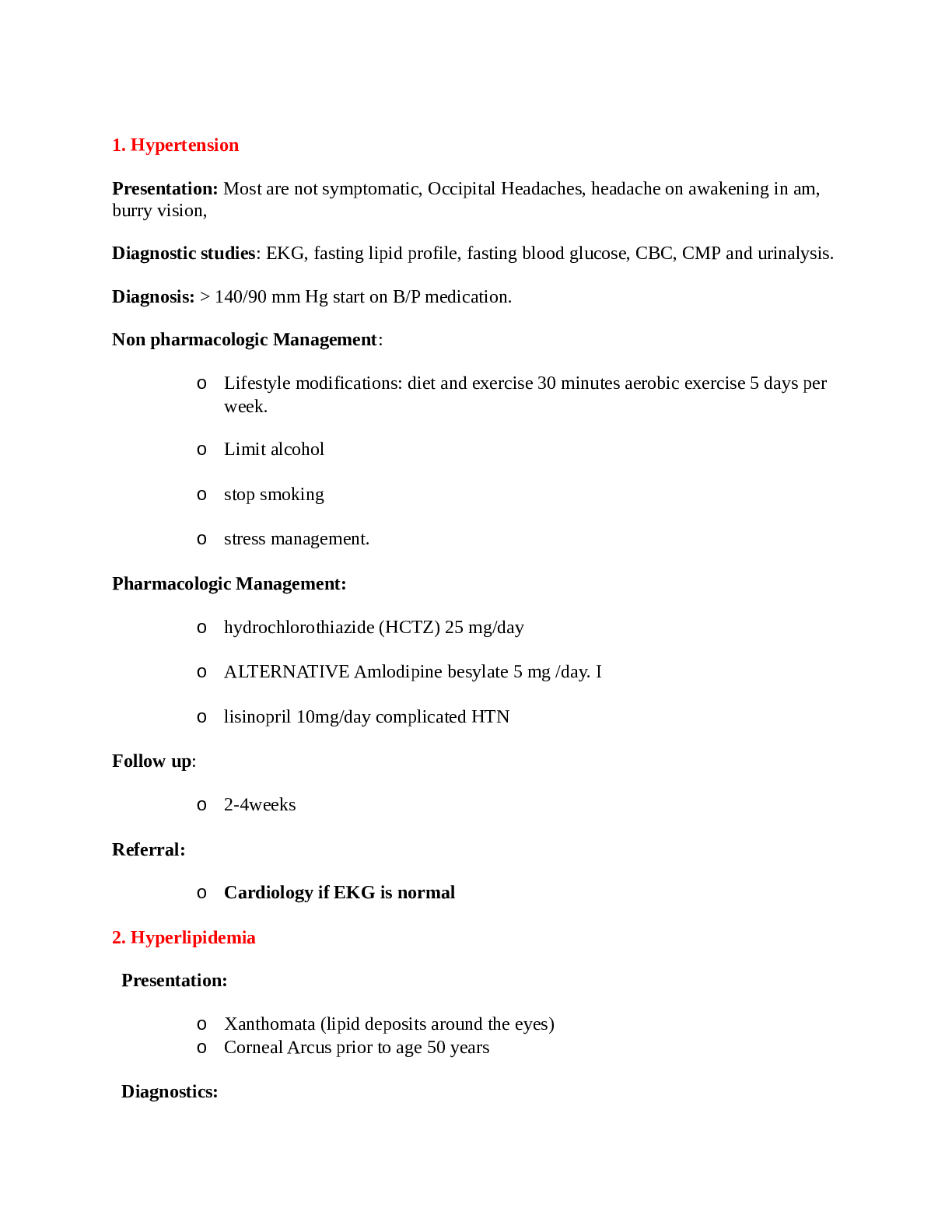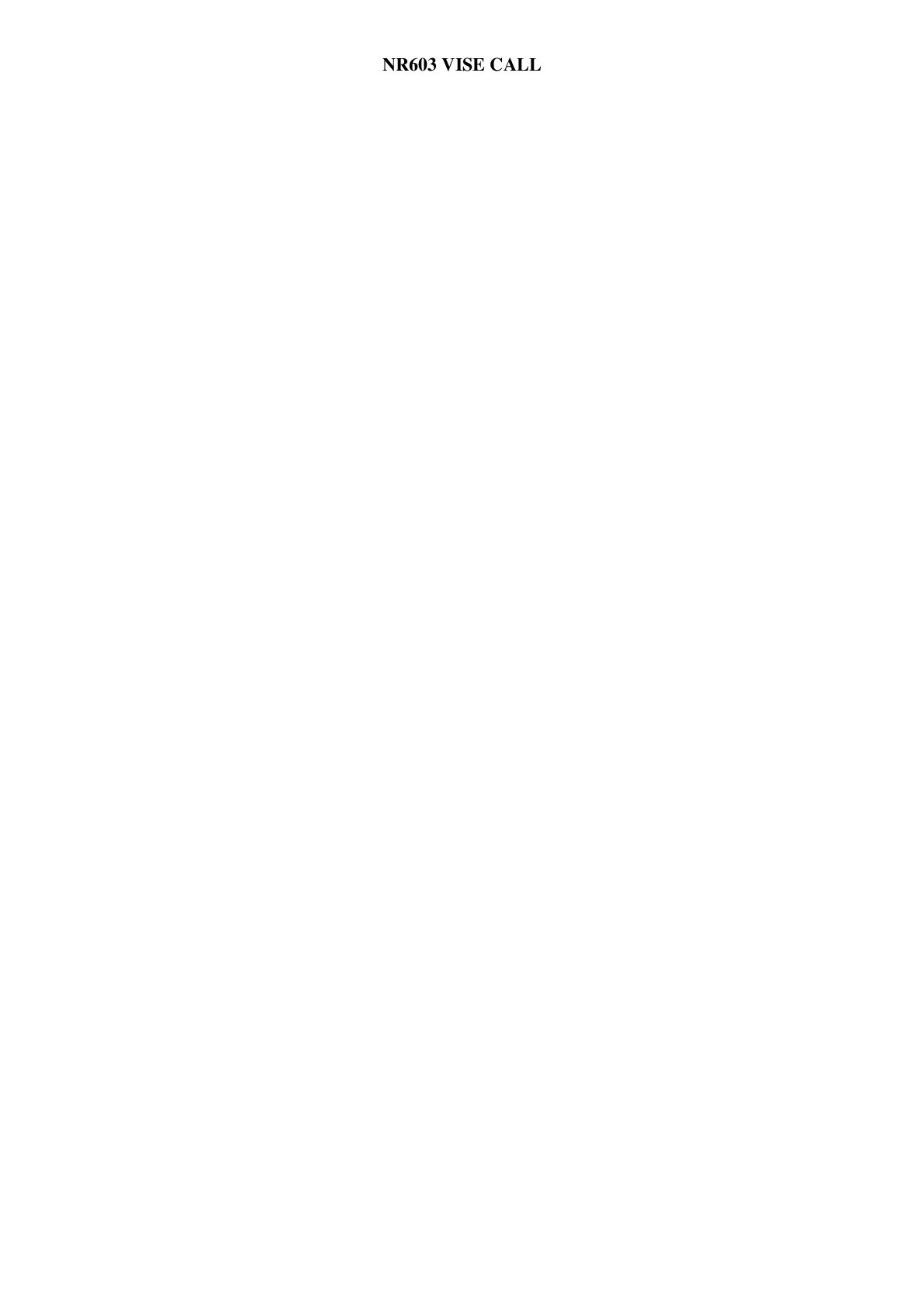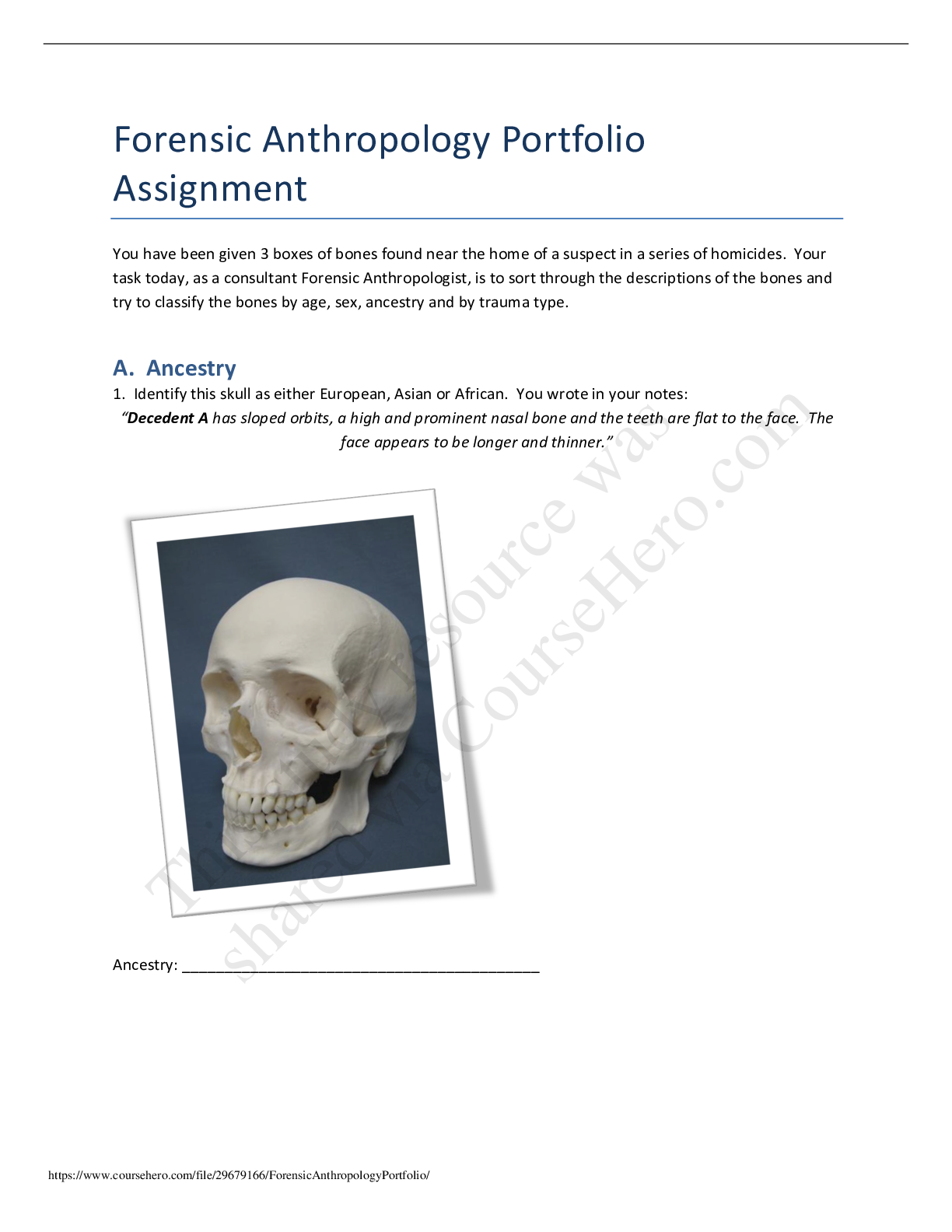*NURSING > STUDY GUIDE > NR 661 Week 4 Vise Assignment Study Guide Common Diagnosis: Summer 2021/2022 (All)
NR 661 Week 4 Vise Assignment Study Guide Common Diagnosis: Summer 2021/2022
Document Content and Description Below
1. Hypertension Presentation: Most are not symptomatic, Occipital Headaches, headache on awakening in am, blurry vision, Assessment: Asymptomatic Occipital headache Blurry vision �... � Headache upon wakening Look for AV nicking LVH Exam: Carotid bruits Abdominal bruits Kidney bruits Diagnostic studies: to look for secondary causes of HTN like target organ damage and establish ASCVD risk: EKG, fasting lipid profile, fasting blood glucose, CBC, CMP (electrolyte, creatinine, & calcium levels), and urinalysis (checking for proteinuria). Diagnosis: Measure BP 5 minutes apart. Average of 2 or more BP readings on two different visits at > 140/90 mm Hg start then can be diagnosed with HTN. If Stage 1 (ASCVD <10%) then non-pharmacologic management only: First: Lifestyle modifications: diet and exercise 30 minutes aerobic exercise 5 days per week. Limit alcohol stop smoking stress management. DASH Medication compliance Reduce sodium intake Measure BP daily If Stage 2 (ASCVD >10% and known CAD) initiate lifestyle + Pharmacologic Management: Alone: hydrochlorothiazide (HCTZ) 25 mg/day (chlorthalidone is preferred over HCTZ) Alone: lisinopril 10mg/day complicated HTN first line Combo: thiazide + ACE or ARB Alternative CB (especially in isolated HTN seen mainly in older adults) Black population: thiazide + CCB is recommended first line Follow up: 2-4weeks Referral: Cardiology if EKG is abnormal Differential: Secondary hypertension Pregnant Pregnancy induced hypertension Hollier: page 62 2 2. Hyperlipidemia Etiology: may be familial, dietary, obesity, hypothyroid, renal disorders, thiazide or beta blocker use, alcohol and/or caffeine intake Presentation: few physical findings Xanthomata (lipid deposits around the eyes) Corneal Arcus prior to age 50 years (white iris), normal Angina Bruits MI Stroke Diagnostics: Fasting/nonfasting lipid profile (total cholesterol, LDL, and HDL minimally affected by eating) Glucose, UA and creatinine (for detection of nephrotic syndrome which can induce dyslipidemia), TSH (for detection of hypothyroidism) Diagnosis: Pt with LDL >= 190mg/dL Non-pharmacologic Management: Lifestyle Modification; diet and exercise. Pharmacologic Management Those who benefit most from statin therapy include: hx of CVD or stroke, LDL 190 or greater, DM with LDL 70-189, no evidence of ASCVD or DM but have LDL 70-189 PLUS an estimated ASCVD risk of 7% or greater High risk: o Atorvastatin 40 or 80 mg daily o Rosuvastatin 20 or 40 mg daily Moderate risk: o Atorvastatin 10 or 20 mg daily o (other statin medications also listed in Hollier) If statins not tolerated, temporarily stop, decrease dose, and re-challenge with 2-3 statins of differing metabolic pathways and intensities. Follow up: after initiating therapy, follow-up every 6-8 weeks until goal attained then every 6-12 months to evaluate compliance evaluate lipids every 5 years starting at age 20 if normal values obtained Refer: Nutritionist Differentials: consider secondary causes Hypothyroidism Pregnancy Diabetes Non-fasting state Hollier: page 55 3 3. Diabetes type 2 - Etiology: genetics, high BMI with central obesity, inactivity, drug or chemical induced like glucocorticoids or antiretroviral therapy Risk factors: BMI >/= 25 Hx of gestational diabetes First or second degree relative with DM PCOS, acanthosis nigricans HDL-C <35 / TG >250 HTN or HTN treatment meds CVD Presentation (assessment): insulin resistance in target tissues Polydipsia, Polyuria, Polyphagia, (showing symptoms) agitation, nervousness, obesity, fatigue blurry vision Exam feet, pulses, nail thickness, odor, swelling, mobility Diagnostics: EKG, CBC and urinalysis (glucosuria, proteinuria, hyperglycemia), CMP, LIPIDS< Microalbuminuria, TSH, A1C Diagnosis: Diabetes Hgb A1C >or equal to 6.5% Fasting glucose>126mg/dl and confirmed on a different day Fasting between 100-126 = impaired glucose Nonfasting less than 126 = normal values Recurrent yeast infections Non-pharmacologic Management/prevention: Weight loss (5-10 pound goal) Monitor Blood glucose at home and diary (daily) Exercise 150 minutes or more per week (no more than 2 consecutive days without activity); resistance training 2-3 days per week on nonconsecutive days avoid alcohol avoid smoking Pharmacologic Management: First: Initiate metformin 500mg BID if not contraindicated, then, when needed add- Actos 15 mg daily, then, when needed add- Levemir 10 units once a day *Initiate insulin early in course of oral therapy: 0.1-0.2 units/kg/day or 10 units daily of peakless insulin With older adults, start low and go slow Follow up: recheck A1C in 90 days Screening in adults >45 years be done every 3 years and ore often if fasting glucose close to 126 4 Screen patients with hx of gestational diabetes at 6-12 weeks gestation with OGTT and Q3years after that for life Referral: Ophthalmologist at time of diagnosis Fundoscopic exam Diabetic educator/ specialist Podiatry Education: Carbs 50% Protein 30% Fat 20% Good glycemic control – no low sugars 10-15 years develop complications Complications (usually present within 10-15 years after onset of DM but may earlier): Neuropathy Nephropathy Glaucoma = blindness Cataracts Charcot foot Differentials: Gestational diabetes Cushing’s syndrome Corticosteroid use Hollier: page 216 4. Back pain – Etiology: often unable to pinpoint; may be due to stretching or tearing of nerves (radiculopathy), muscles, tendons, ligaments, or fascia of the back secondary to trauma or just chronic mechanical stress; compression or irritation of the nerve roots are common Presentation: back pain complaint, buttock or one or more thighs that is aggravated by movement, rising from seated positions, standing, and flexion (may be relieved by rest) muscle spasm may be present over lumbosacral area Maybe localized, referred, or radiating (down leg and below knee) Assess rectal tone in those describing cauda equina Motor, sensory, and reflex exams should be done o DTRs: patellar tests nerve roots at L2-L4 & Achilles tests nerve roots at S1-S2 o Diminished or absent imply myopathies, decreased muscle mass, and nerve root impairment New onset of radicular pain on older adults is often sign of spinal stenosis Straight leg raise test: elevation of affected leg in supine will elicit pain at 20-30 degrees for severe disease, 30-60 degrees for moderate. Determine OLDCARTS, any pre-existing conditions, past surgeries or trauma which may be contributing. Diagnostics: (see imaging below) 5 routine imaging is not recommended f [Show More]
Last updated: 1 year ago
Preview 1 out of 31 pages
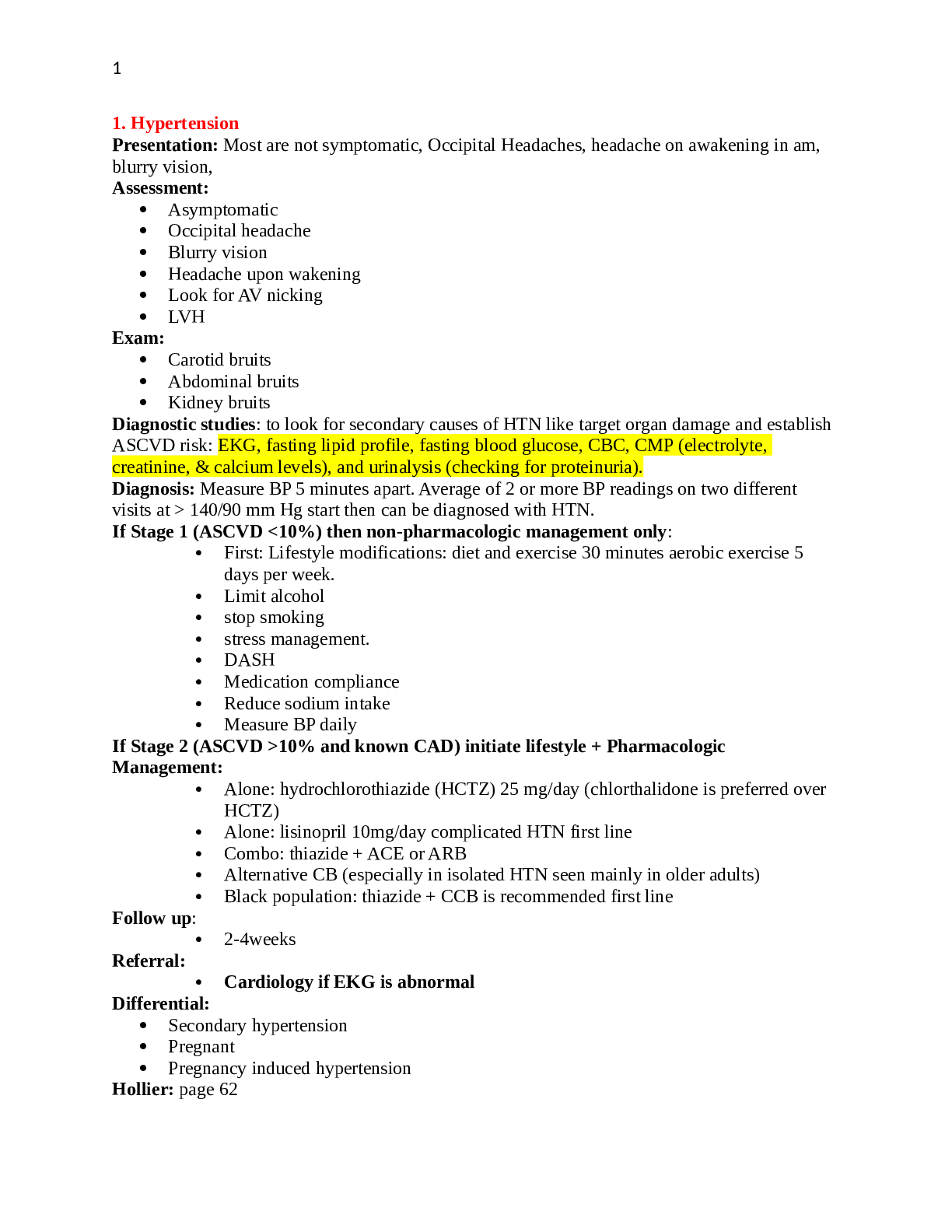
Reviews( 0 )
Document information
Connected school, study & course
About the document
Uploaded On
Mar 30, 2022
Number of pages
31
Written in
Additional information
This document has been written for:
Uploaded
Mar 30, 2022
Downloads
0
Views
58



